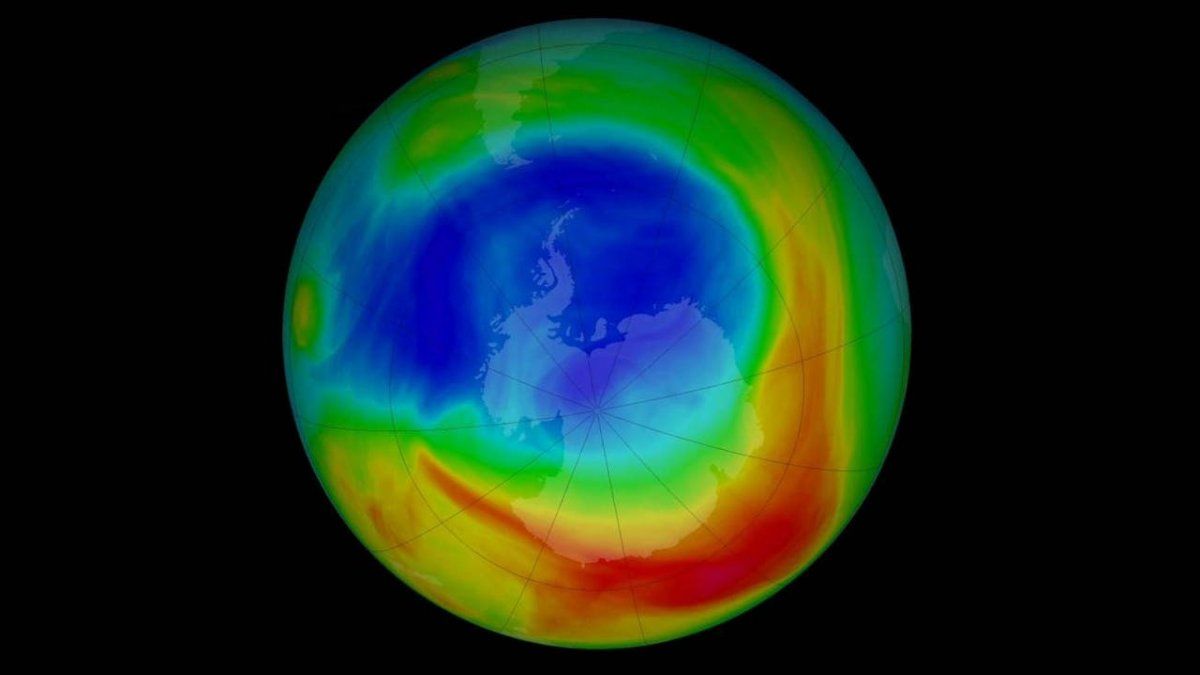The ozone layer hole and its causes continue to be analyzed. But in 2024 something unexpected happened: the extent of the hole was much smaller than other years. Furthermore, its early closing during the first week of December was striking, as confirmed by the National Meteorological Service (SMN).
“With a maximum area of approximately 22 million square kilometers Towards the end of September, the ozone hole marked a notable difference compared to recent years, in which the area with a decrease in this gas reached significantly greater extents,” the SMN published. To the point that it came to position itself on the south of the Argentina.
Ozone serves as a protector for the Earth, scattered throughout the 35 kilometers thick from the stratosphere. Any damage to it increases the ultraviolet radiationwith harmful consequences for the environment and the terrestrial life: skin cancer, eye problems, decreased harvests, and damage to forests, among others.
The ozone layer hole closed: what phenomenon is it due to?
This year’s ozone hole only began to form end of augustlater than 2023, notes Pablo Sigal in Clarín. From the NASA Earth Observatory They related this behavior to sudden stratospheric warming in July and August.
“These infrequent disturbances usually alter the conditions necessary for the formation of the ozone hole,” explains Sigal. By September of this year, the hole reached 15 million square kilometers and in November it reached 10 million.
hunga tonga volcano
The eruption of the underwater Hunga Tonga-Hunga Ha’apai volcano in January 2022 altered the chemistry of the stratosphere,
Courtesy: National Geographic
The underwater volcano Hunga Tonga-Hunga Ha’apai experienced an eruption in January 2022 and this represented a injection of steam and sulfur dioxide. This altered the chemistry of the stratosphere and caused a 7% loss of the ozone layer, according to Sigal. The information was published in the magazine Proceedings of the National Academy of Sciences.
The forecast after the eruption of the volcano in Tonga was that its climatic consequences would last up to five years, with the consequent warming of the Earth. As far as the ozone layer is concerned, however, everything would indicate that its impact is beginning to weaken, says Sigal.
According to the SMN, in this process “global warming plays a paradoxical role”: The troposphere warms and the stratosphere tends to cool, facilitating the formation of polar stratospheric clouds and the chemical processes that destroy ozone.
Protection of the ozone layer
Human action is key in caring for the ozone layer and Argentina has actively participated in global efforts for its restoration. The country ratified the Vienna Convention for the protection of the ozone layer and Montreal Protocol relating to substances that deplete the layer, with two laws passed in January and September 1990.
The actions undertaken in order to reduce the consumption of chlorofluorocarbons (CFCs), which deplete the ozone layer, allowed the country to comply with the reduction measures required globally. In 2010, the first international elimination date was reached for some of the substances controlled by the protocol, particularly CFCs, halons and carbon tetrachloride. For half a century these substances were used as refrigerant gases, aerosol propellants and for cleaning electronic circuits, among other purposes.
The Montreal Protocol managed to eliminate 99% of these compounds at a global level. “However – says the SMN -, experts highlight that the complete recovery could extend until the middle of the 21st century” and this depends on the continuity of regulations and the evolution of climate change.
Source: Ambito
I am a 24-year-old writer and journalist who has been working in the news industry for the past two years. I write primarily about market news, so if you’re looking for insights into what’s going on in the stock market or economic indicators, you’ve come to the right place. I also dabble in writing articles on lifestyle trends and pop culture news.



